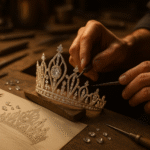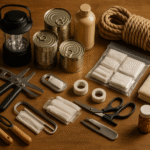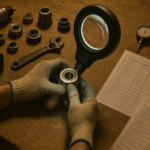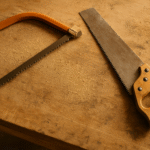Chainsaw carving has evolved from a niche art form into a global craft that blends engineering precision with creative expression. What began as rough, large-scale sculptures carved from fallen logs has become an intricate discipline requiring control, accuracy, and balance. In 2025, the best chainsaw for carving isn’t just about raw power — it’s about ergonomics, vibration reduction, and precision engineering. Whether you’re a beginner experimenting with softwood figures or an experienced artist shaping complex sculptures, choosing the right carving chainsaw makes all the difference.
Unlike traditional chainsaws designed for heavy-duty cutting, carving chainsaws are lightweight, narrow-tipped, and designed for maneuverability. Their smaller guide bars — often between 8 and 14 inches — allow detailed cuts, while specialized carving bars feature a dime or quarter tip for fine shaping. The result is smoother transitions, tighter curves, and cleaner detail work. Most modern carvers favor electric or battery-powered models for their quiet operation and low vibration, both crucial for extended carving sessions. This shift mirrors the precision-driven innovation discussed in The Battery Wars: Which Brand Dominates Power and Longevity in 2025?, where advances in energy systems make cordless tools more capable than ever.
The best carving chainsaws of today prioritize control over cutting speed. Features like automatic oiling, anti-kickback mechanisms, and fine-tooth chain configurations enhance safety and precision. For instance, smaller electric models perform exceptionally well for detail trimming and finishing, while compact gas-powered options still dominate large-scale or outdoor carving projects. Makers often modify their chainsaws with specialized bars, narrow kerf chains, and fine-tuned clutches to optimize handling. These modifications align closely with the craftsmanship mindset explored in Why Learning to Repair Your Tools Is the Smartest Skill in 2025 — mastery begins with understanding and maintaining the machine behind your art.
Equally important is the ergonomics of the tool. Comfort, weight distribution, and balance directly affect precision. The lighter the saw, the less fatigue you experience — which means better accuracy over longer carving sessions. Many professional carvers prefer saws with rear-handle grips for better reach and stability, especially when making deep cuts or vertical passes. Some even integrate digital carving aids, such as laser alignment or torque monitoring systems, bridging the gap between traditional craftsmanship and modern innovation. This seamless blend of artistry and technology reflects the evolution of workshops described in From Garage to Smart Studio: The Modern DIYer’s Transformation — spaces where creativity meets intelligent design.
Ultimately, the best chainsaw for carving in 2025 isn’t defined by brand or size — it’s defined by purpose. Each carver’s style, medium, and level of experience determine the right fit. A small electric saw with a dime-tip bar may be perfect for detail carving, while a compact gas saw suits rough shaping of larger logs. What matters most is how well the tool responds to your touch. Chainsaw carving is less about cutting wood and more about shaping vision — transforming power into precision, and motion into meaning.









